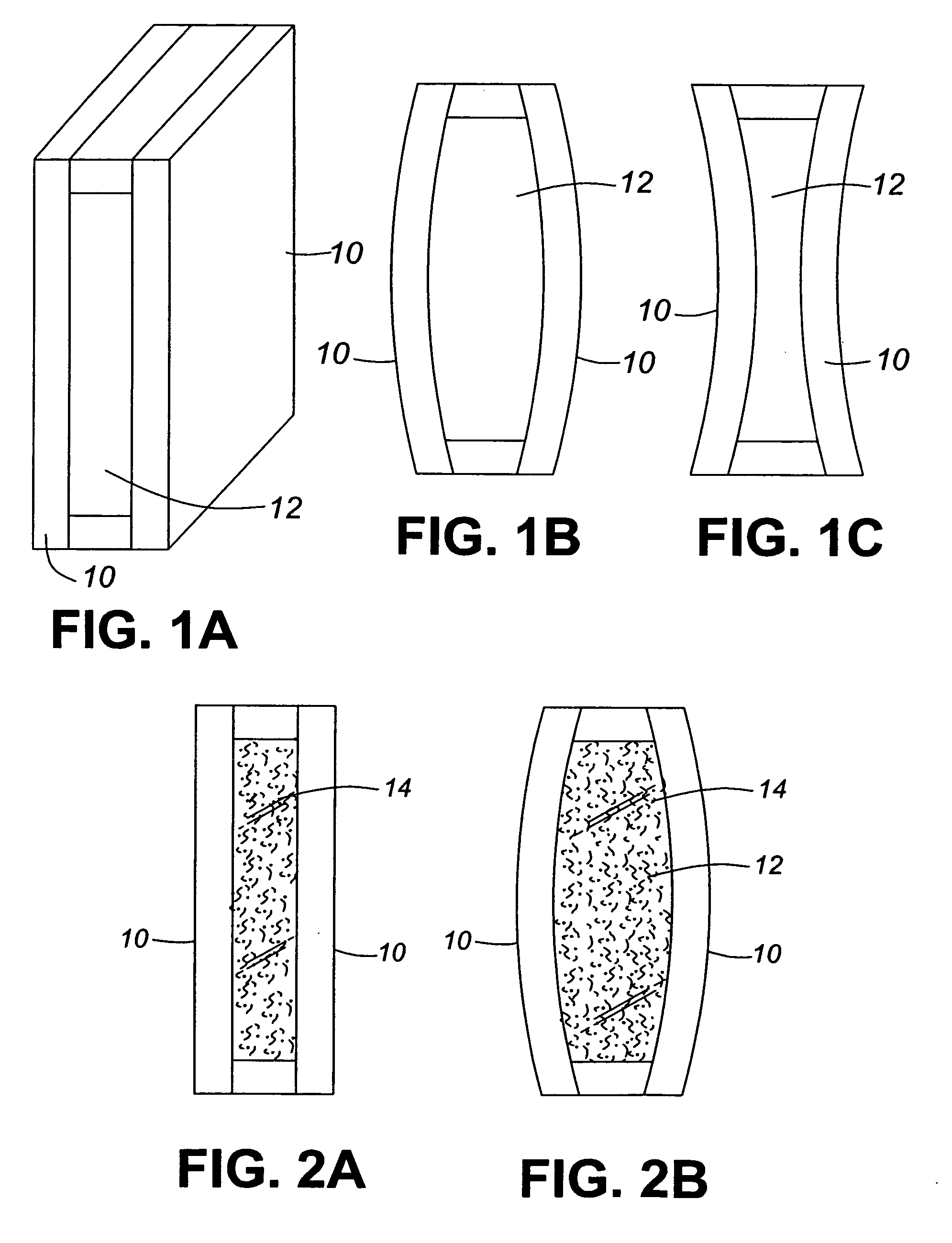Glazing unit with transparent filler
a technology of filler and glazing unit, which is applied in the field of glazing, can solve the problems of reducing light transmission, undesirable adhesive coating of particles and cementing them together, and unable to achieve the effect of being practical, so as to improve the thermal insulation properties of glazing units, reduce radiation, and increase light scattering
- Summary
- Abstract
- Description
- Claims
- Application Information
AI Technical Summary
Benefits of technology
Problems solved by technology
Method used
Image
Examples
example
[0030] A glazing unit was made using ½″ thick IncolCore™ honeycomb insert, an AGL401 non-woven fibreglass veil as containment layers, cabot nanogel insulation, and clear ¼″ glass forming the lites. An AGL 300 veil was bonded to the lites as described in our copending Canadian application no. 2,510,947, with Edgetech IG's Triseal® Superspacer® and Tremco Proglaze II silicone.
[0031] A single insert of dimensions equal to the air gap may be used, or alternatively multiple smaller tiles may be used. Tiles or full-sized inserts may be the full thickness of the airgap or may only comprise part of the thickness of the gap, and other materials such as air or sparse white fibre can be used for the remainder. Such inserts may be used in fibre reinforced plastic panels such as kalwall www.kalwall.com, or in rolled channel glass, or between sheets of plastic.
[0032] In another embodiment honeycomb material is bonded directly to a lite of glass. This glass is dual purpose, acting as both contai...
PUM
 Login to View More
Login to View More Abstract
Description
Claims
Application Information
 Login to View More
Login to View More - R&D
- Intellectual Property
- Life Sciences
- Materials
- Tech Scout
- Unparalleled Data Quality
- Higher Quality Content
- 60% Fewer Hallucinations
Browse by: Latest US Patents, China's latest patents, Technical Efficacy Thesaurus, Application Domain, Technology Topic, Popular Technical Reports.
© 2025 PatSnap. All rights reserved.Legal|Privacy policy|Modern Slavery Act Transparency Statement|Sitemap|About US| Contact US: help@patsnap.com


